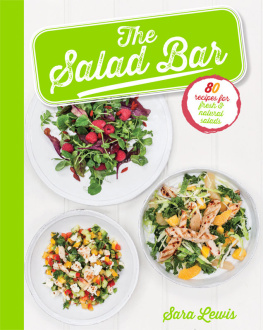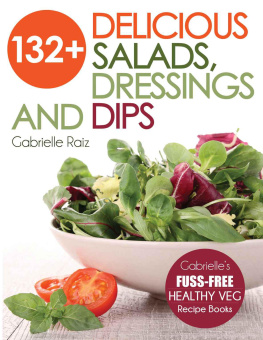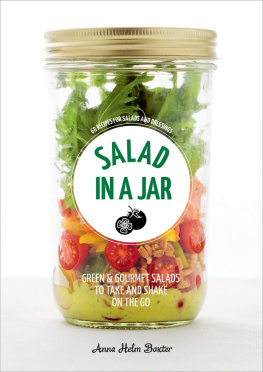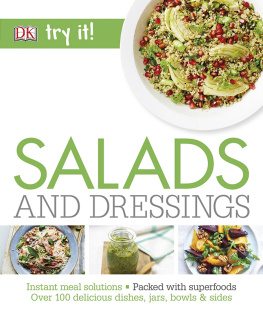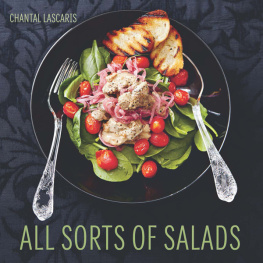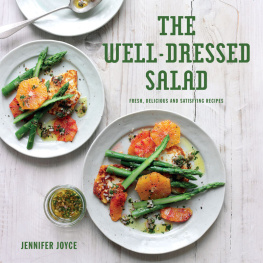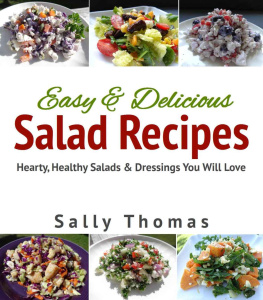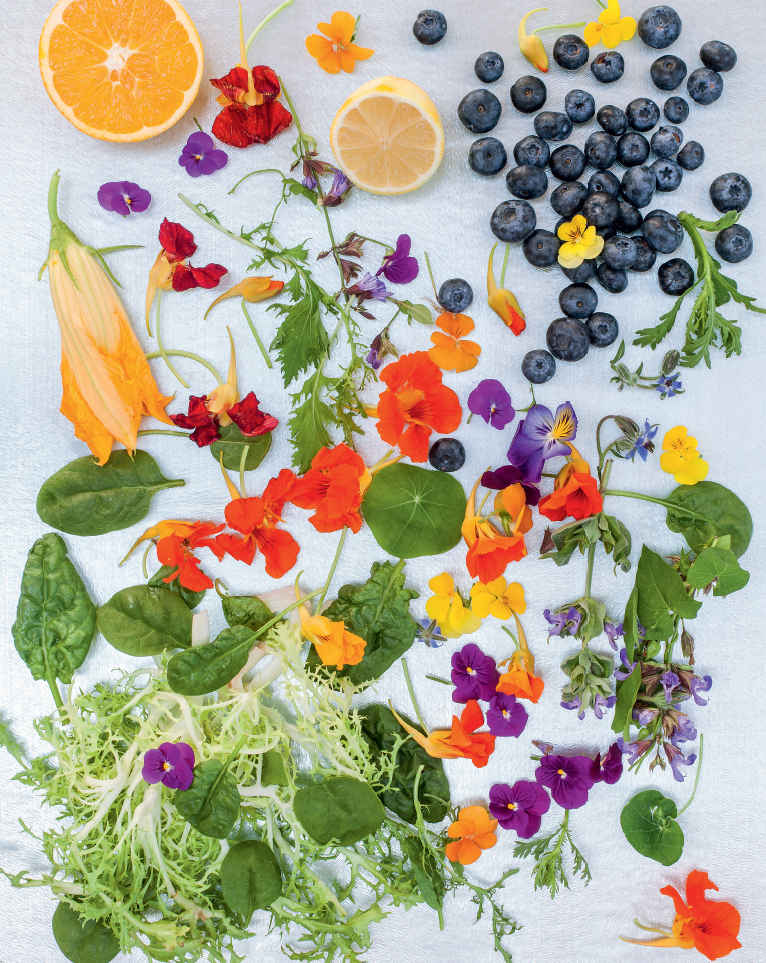

This digital edition published by Parragon Books Ltd in 2015
LOVE FOOD is an imprint of Parragon Books Ltd
Parragon Books Ltd
Chartist House, 1517 Trim Street
Bath, BA11HA, UK
www.parragon.com/lovefood
Copyright Parragon Books Ltd 2014
Nixie One Font - Copyright 2011 by Jovanny Lemonad (http://www.jovanny.ru)
Cutive Font - Copyright 2015 Vernon Adams with Reserved Font Name Cutive
Lobster Font - Copyright 2011, Pablo Impallari (), with Reserved Font Names Lobster and Lobster Two
LOVE FOOD and the accompanying heart device is a registered trade mark of Parragon Books Ltd in Australia, the UK, the USA, India and the EU.
All rights reserved. No part of this publication may be reproduced, stored in a retrieval system, or transmitted, in any form or by any means, electronic, mechanical, photocopying, recording, or otherwise, without the prior permission of the copyright holder.
ISBN: 978-1-4723-5393-1
10 9 8 7 6 5 4 3 2 1
Created and produced by Pene Parker and Becca Spry
New recipes and food styling: Sara Lewis
Photographer: Haraala Hamilton
Notes for the reader
This book uses both metric and imperial measurements. Follow the same units of measurement throughout: do not mix metric and imperial. All spoon measurements are level: teaspoons are assumed to be 5 ml and tablespoons are assumed to be 15 ml. Unless otherwise stated, milk is assumed to be skimmed, eggs and individual vegetables are medium, pepper is freshly ground black pepper and all root vegetables should be peeled prior to use. Garnishes, decorations and serving suggestions are all optional and not necessarily included in the recipe ingredients or method. Any optional ingredients and seasoning to taste are not included in the nutritional analysis. While the author has made all reasonable efforts to ensure that the information contained in this book is accurate and up to date at the time of publication, anyone reading this book should note the following important points:
Medical and pharmaceutical knowledge is constantly changing and the author and the publisher cannot and do not guarantee the accuracy or appropriateness of the contents of this book;
In any event, this book is not intended to be, and should not be relied upon, as a substitute for appropriate, tailored professional advice. Both the author and the publisher strongly recommend that a doctor or other healthcare professional is consulted before embarking on major dietary changes;
For the reasons set out above, and to the fullest extent permitted by law, the author and the publisher: (i) cannot and do not accept any legal duty of care or responsibility in relation to the accuracy or appropriateness of the contents of this book, even where expressed as advice or using other words to this effect; and (ii) disclaim any liability, loss, damage or risk that may be claimed or incurred as a consequence - directly or indirectly - of the use and/or application of any of the contents of this book.
The salad bar
Salads have come a long way from the simple lettuce, tomato and cucumber-based meals our mothers used to serve. Foreign holidays have inspired a passion for culinary exploration, and with so many exciting ingredients now available in the shops, we can recreate salads from all over the world and experiment with new ideas.
Salads combine a variety of textures, with delicate lettuce leaves contrasting, for instance, with crunchy celery, radishes, seeds and nuts, and creamy avocado or Brie. Often salads mix up tastes too, with salty feta cheese sharing a plate with peppery rocket leaves, or bitter radicchio flavoured with sweet aged balsamic vinegar.
The key to a healthy diet
Nutritionists agree that the key to a healthy diet is variety. Eating more vegetables and fruit can help you look good and feel great and give you lots of energy. It can also help to prevent some cancers and lower the risk of coronary heart disease, diabetes and certain digestive problems.
It is recommended that we should aim to eat at least five portions of vegetables and fruit each day and reduce our consumption of meat, fat and sugary foods. Eating more salads is an excellent way to achieve this.
Most ingredients in a salad are served raw or lightly cooked, which means the nutrient levels are at their optimum. Raw foods tend to need more chewing than cooked foods, and take longer for the body to digest, leaving you feeling fuller for longer, so you are less likely to over-eat.
Salads arent just for summer. By using seasonal ingredients such as asparagus in late spring, lettuces in summer, squashes in autumn, and root vegetables, kale, grains and pulses in winter, you can enjoy a healthy diet all year round.
Salads dont have to be cold either; they can include warm grains, roasted vegetables, strips of seared steak or stir-fried prawns, for example. In colder months, add heat to dressings with spices, grated fresh ginger and garlic.
Preparing salad leaves
Leaves are delicate and can bruise easily. They need washing; even bags of ready-washed salads benefit from a rinse as they tend to have been washed with chlorine-like chemicals when packaged. Separate leaves, then put them in a sink of cold water, turn them to loosen and remove any dirt, then drain in a colander. Pat dry with a clean tea-towel or dry in a salad spinner. Any unused leaves can be packed into a plastic box or bag, sealed and stored in the vegetable compartment in the bottom of the fridge. Add dressings at the last minute so the leaves dont wilt.
Lettuce whos who
A huge range of salad leaves is sold in the shops. But why not grow your own? Rocket, baby chard and mizuna are all easy to grow in a small flower bed, plant pot or window box, and the first leaves can be harvested within six weeks of planting.
Butterhead or basic round lettuce soft, round lettuce with a pale-green heart. It doesnt keep well, so use on the day of purchase.
Chard leaves tiny red-veined green leaves with red stems. Ruby chard has deep red leaves and stems. Also try small newly shooting leaves of Swiss chard or beetroot.
Chicory pale, compact, spear-shaped leaves with pale green or red tips and a crisp, bitter flavour.
Cos and Romaine lettuce long, thin lettuces with dark green outer leaves that change to pale green at the heart. They are famously used to make the classic Caesar salad.
Dandelion not so readily available from shops, but young dark leaves can be picked from the garden, although they must be washed well before being eaten. Longer, yellow, thin-stemmed French dandelions (or pissenlit) can be bought from specialist greengrocers.
Frise sometimes called curly endive, frise lettuce is a member of the chicory family. The spreading frond-like leaves taste a little bitter. It can be made into a salad on its own or mixed with other leaves.
Iceberg a large, crisp, crunchy, densely-packed lettuce that keeps well in the fridge.
Lambs lettuce not a true lettuce, but tiny clumps of soft, buttery leaves that are shaped like lambs tongues. Popular in France and Italy.
Little Gem lettuce a small cos-type lettuce, with sweet, crisp leaves and a compact heart. Also available in red-edged varieties.
Mizuna similar in looks to dandelion leaves, with a delicate peppery flavour.
Mustard leaf baby leaves with an elongated shape and purple edges.

